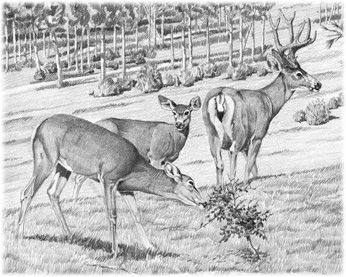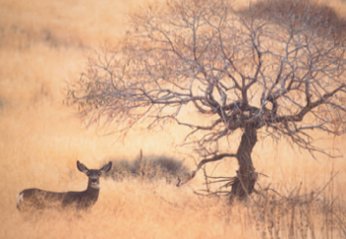Lead CDFW biologists: Tom Stephenson, Dan Taylor
Natural History
 Mule Deer browsing.
Mule Deer browsing.
California is home to a number of subspecies of deer. The Inland Deserts Region, with its large and diverse area, is home to several. Explore the natural history of the various black-tailed mule deer:
Management Projects
 Mule deer in open grassland.
Mule deer in open grassland.
The Inland Deserts Region has diverse habitats for mule deer, ranging from desert, both low and high, to foothills and mountain peaks. Each of these areas provide unique management challenges. Some deer have significant migration patterns, others do not. Past and present conservation activities:
See also, Statewide Deer Management